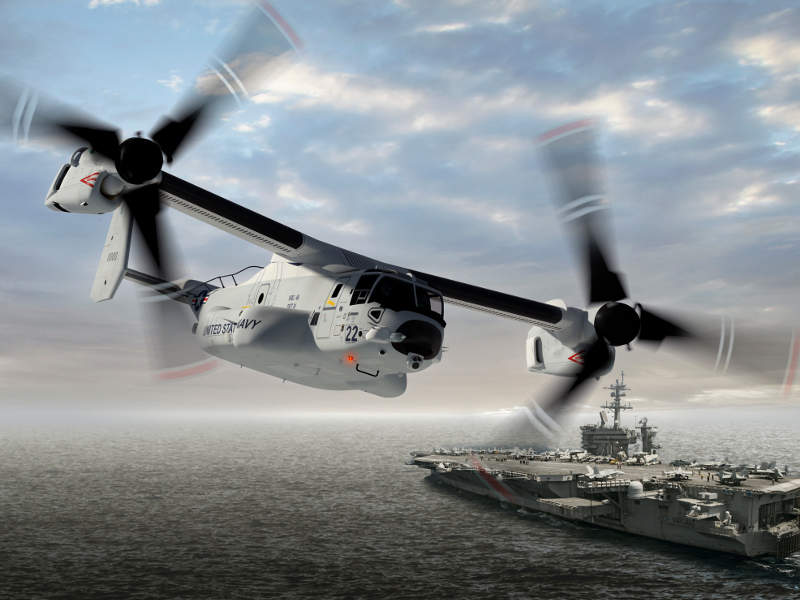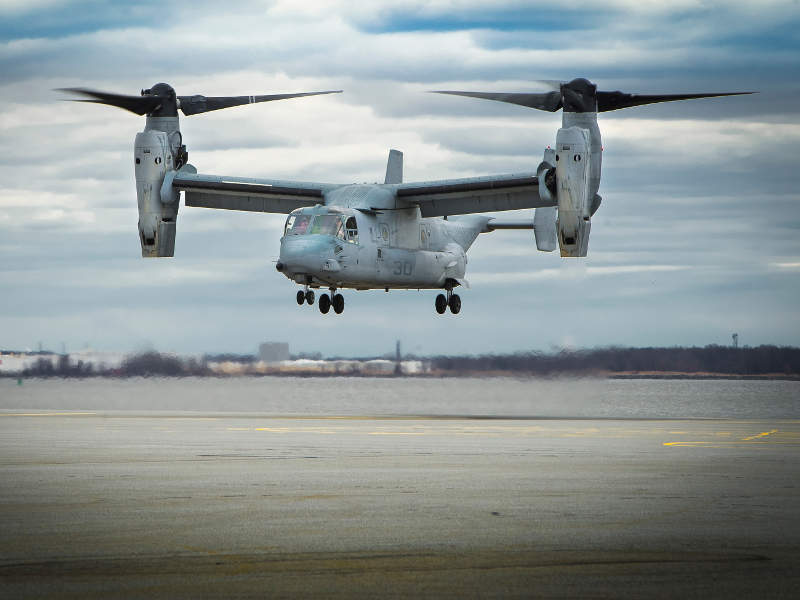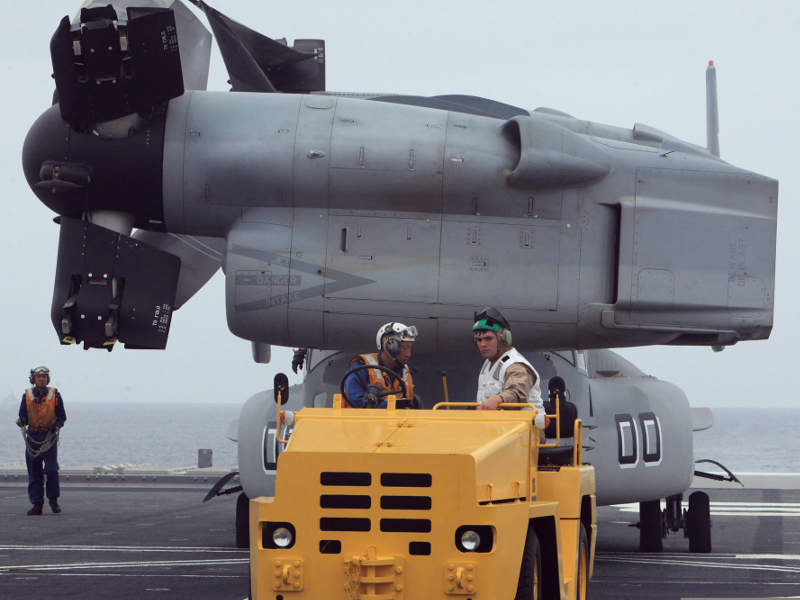The CMV-22B Osprey long-range tiltrotor aircraft is the US Navy’s future variant of MV-22B Osprey assault support aircraft developed by Bell Boeing for the US Marine Corps.
The medium-lift variant will operate as a carrier onboard delivery (COD) aircraft to meet the logistics support requirements of the Joint Force Maritime Component Commander (JFMCC) during time-critical scenarios. It will replace Northrop Grumman-built C-2A Greyhound cargo aircraft that has been in service with the US Navy since the 1960s.
The CMV-22B will be used by the US Navy for transportation of special warfare teams, mail and cargo from shore to its aircraft carriers, as well as for shore or sea-based combat search-and-rescue (CSAR) missions.
Bell Boeing Joint Program Office was awarded a contract to manufacture 39 CMV-22B aircraft for the US Navy in July 2018 under a $4bn modification to the V-22 tiltrotor aircraft advance acquisition contract.
Initial operational capability (IOC) of the aircraft is expected to be achieved in 2021, while full operational capability (FOC) is expected to be achieved in 2023. The US Navy is planning to purchase only 44 aircraft versus 48 originally planned under the programme of record.
The navy received the first CMV-22B Osprey in February 2020. The CMV-22B Osprey long-range tiltrotor aircraft incorporates tested tiltrotor capabilities to support carrier fleet operations.
The developmental test model flew from Bell’s Amarillo Assembly Center in Texas and landed at Naval Air Station Patuxent River in Maryland. It will continue developmental testing with an integrated team led by Air Test and Evaluation Squadron (HX) 21.
CMV-22B Osprey design and features
The CMV-22B Osprey tiltrotor aircraft will feature a fixed-wing design with two main wings mounted on top of the fuselage. The tail configuration will comprise a pair of vertical fins connected by a horizontal tailplane.
The aircraft can perform take-off and landing operations onshore, as well as on the aircraft carriers, using tri-cycle landing gear, which includes a two-wheeled nose gear and a pair of two-wheeled main gears. It will feature both vertical take-off and landing (VTOL) and short take-off and landing (STOL) capabilities.
The tiltrotor will have a length of 63ft, a wingspan of 84.6ft with rotors running and a height of 22ft. The maximum gross weight of the aircraft in VTOL and STOL modes will be 23.4t (52,600lb) and 25.4t (57,000lb) respectively. The aircraft can carry up to 2,720kg (6,000lb) of cargo or personnel, including four crew and up to 23 passengers to a range of 1,150nm. The aircraft will be equipped with an improved lighting system for cargo loading operations and a public address system for on-board passengers.
It will also incorporate improved fuel dump capability to dump fuel in-flight in emergency situations and aerial refuelling capability to refuel other naval aircraft based on the aircraft carrier.
Cockpit and avionics
The US Navy’s CMV-22B tiltrotor will have a night vision goggle-compatible glass cockpit, which can accommodate up to four crew members, including a pilot, co-pilot, crew chief and second air-crewman. The cockpit will incorporate four multi-function displays (MFDs) to display imagery and maps.
A multi-sensor payload pod will be mounted beneath the aircraft nose to track and acquire targets, using video tracker, electro-optical (EO) and forward-looking infrared (FLIR) cameras that will produce high-definition real-time imagery during day and night.
The avionics carried by aircraft include autopilot, a forward-looking infrared system, global positioning system (GPS), inertial navigation system (INS), tactical air navigation system (TACAN), VHF radio navigation, instrument landing system (ILS) and fly-by-wire flight control.
The aircraft will also be equipped with a beyond-line-of-sight (BLOS) high-frequency (HF) radio and improved command and control capability to provide line-of-sight communications beyond the horizon.
Engines and performance of CMV-22B tiltrotor aircraft
The tiltrotor will have two rotors with three-blade propellers mounted on each wingtip. The propellers will be driven by two Rolls-Royce Liberty AE1107C two-shaft axial engines, each rated at 6,150shp. Each engine will have a 14-stage compressor, dual full authority digital engine controls (FADECs), a two-stage power turbine and a two-stage gas generator turbine.
The aircraft will have a cruising speed of 269k and a service ceiling of 25,000ft. It will carry a larger fuel tank compared to MV-22B Osprey variant for a greater range of up to 1,165nm.






